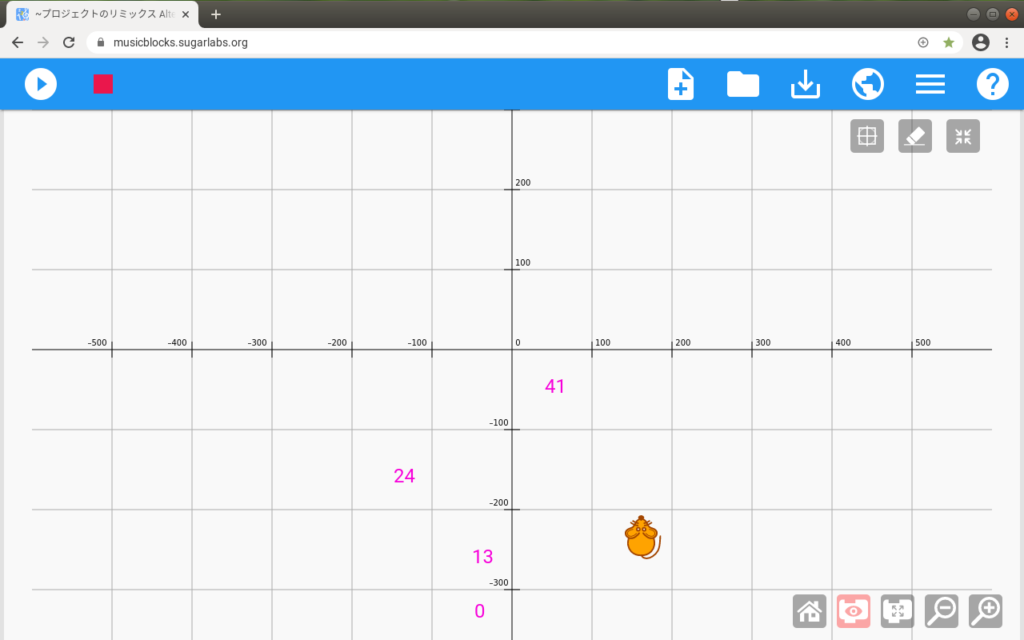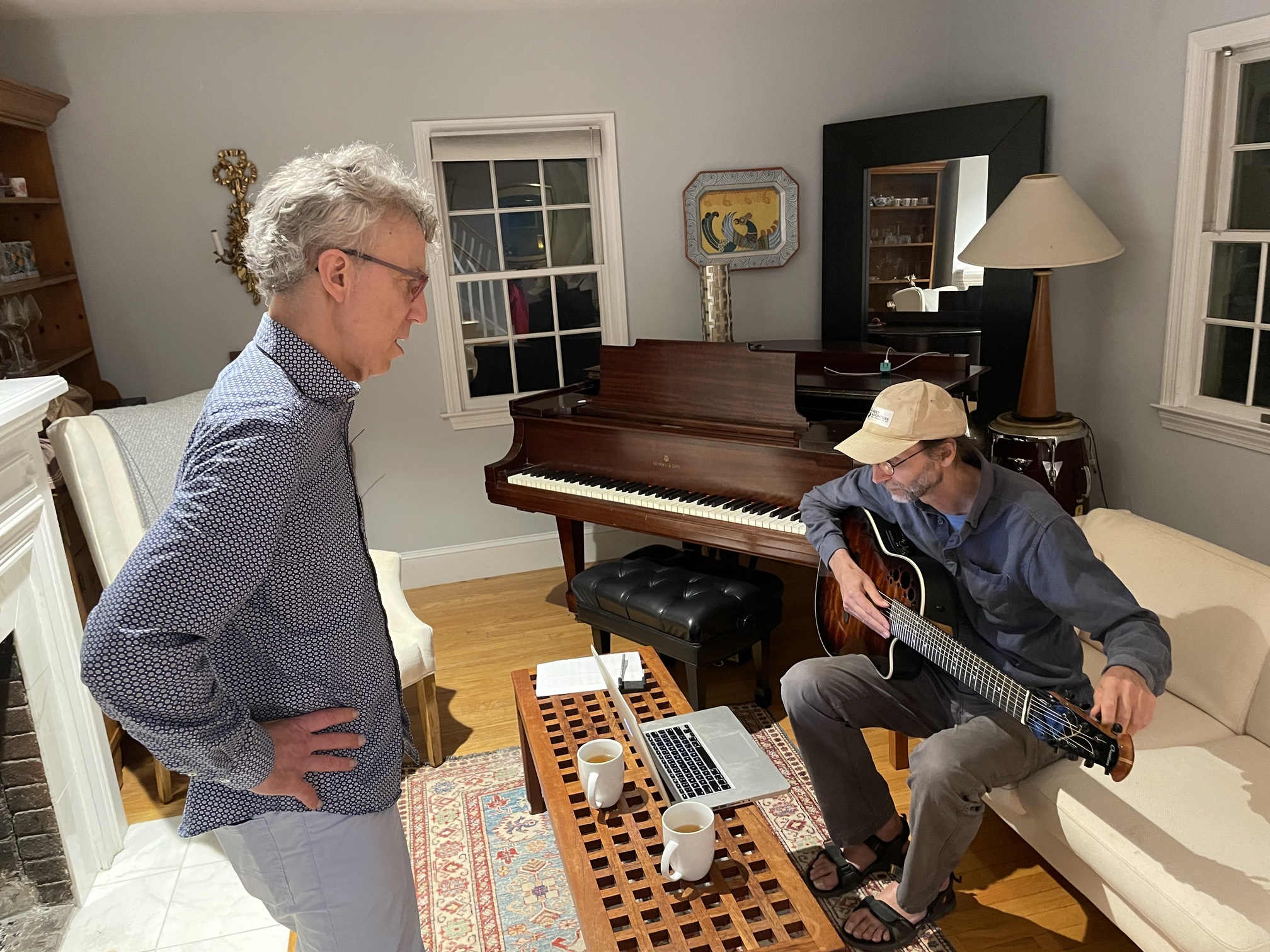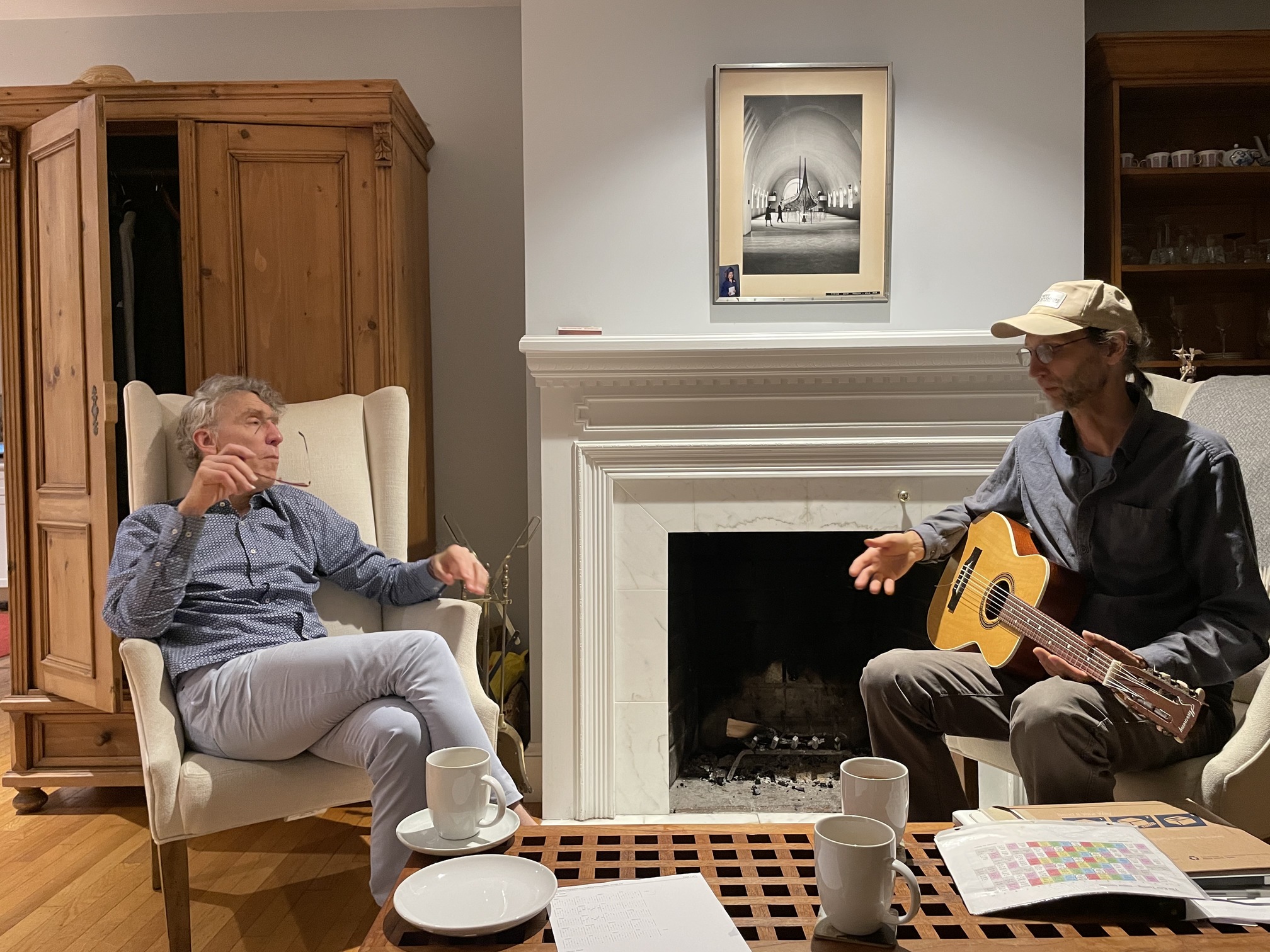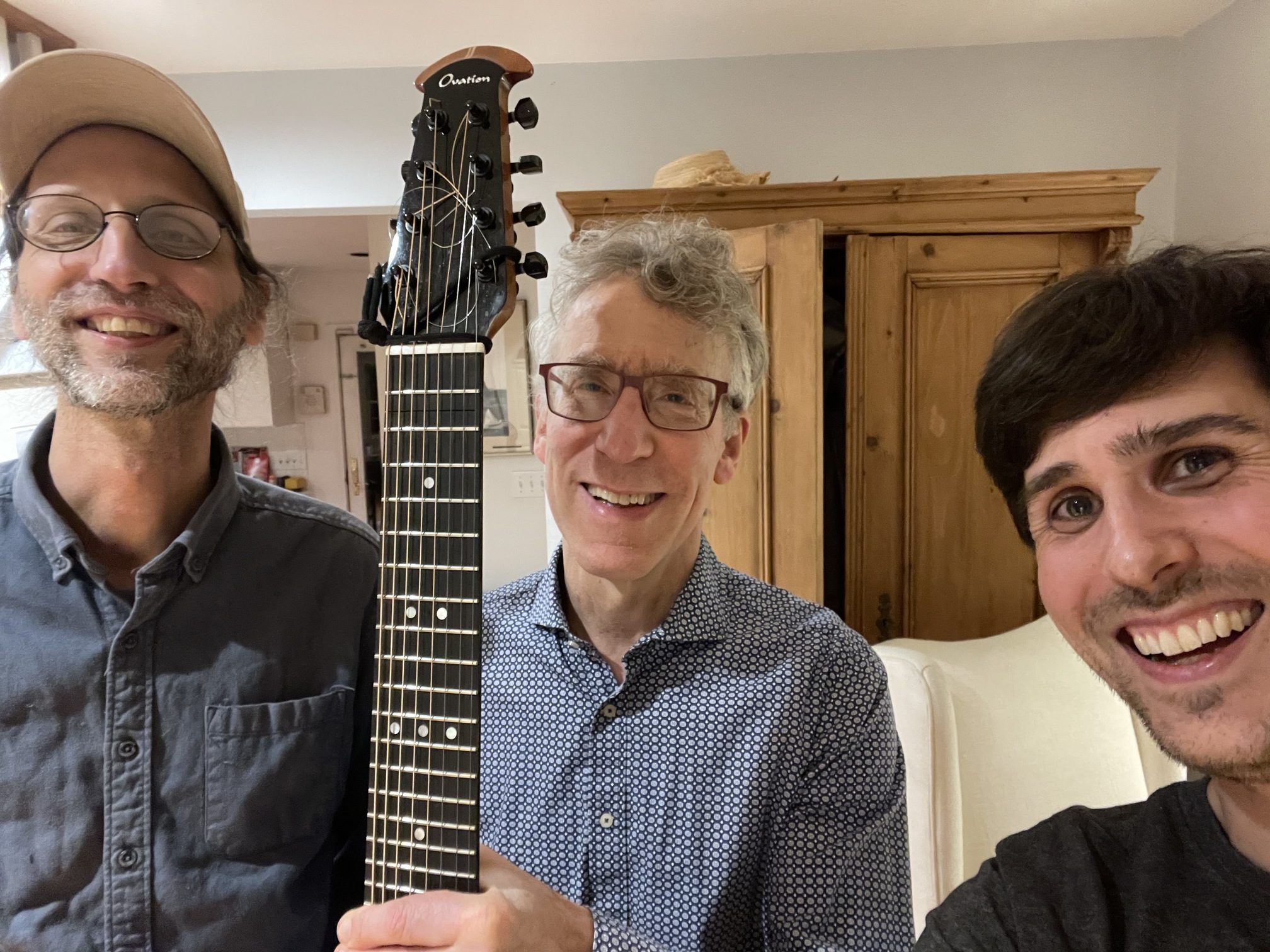I have something to confess: I have been working on a secret project over the past twenty or so months. I’ve been learning and making music for the Kite Guitar, a new kind of guitar.
What is a Kite Guitar?
In simple terms, a Kite Guitar is a guitar that offers more and better tuning possibilities than a regular guitar. It offers more tuning possibilities because it has many more pitches than a regular guitar. It offers better tuning possibilities because the pitches that are possible have better harmonic alignment than a regular guitar.
The guitar looks and feels just like a standard guitar, but it has twelve frets within the space of a perfect fifth (i.e. twelve frets on the Kite Guitar within the space of seven frets on a standard guitar). Kite guitars can be acoustic or electric and they can be steel string or nylon just like other guitars; the system of tuning is the main differentiating factor.
Note: “Harmonic alignment” is basically when the harmonics of a particular tone are well in tune with other tones that are sounding in harmony. This article on the Kite Guitar wiki describes many of the basics in simple terms with good references: https://en.xen.wiki/w/Kite_Guitar_explanation_for_non-microtonalists
In more specific terms, a Kite Guitar is a guitar with a tuning system that divides octaves into forty-one equal divisions instead of twelve. However, instead of placing a fret at each possible division (which would mean forty-one frets within the space of an octave), it skips every other possible fret (resulting in twenty-and-a-half frets within the space of an octave).
Typically, the guitar is tuned by all major thirds, but there are other successful possibilities such as DADGAD, all minor thirds, and alternating major-minor thirds. For a completely detailed description of the Kite Guitar I recommend that you read the Kite Guitar wiki.
How did I get started?
The Kite Guitar was first conceived in 2019 by Kite Giedraitis (hence the name), so it is a relatively new creation. I learned about the instrument at the end of 2020 by fellow guitarist and free software advocate Aaron Wolf. Aaron, who is amongst the Kite Guitars earliest adopters, told me about the instrument in an IRC chat and invited me to one of their weekly meetings. I was intrigued that instrument approximated just intonation, and, because of my work creating Music Blocks, I could appreciate the mathematical and musical achievements involved in such a discovery. Long story short, I enjoyed what I heard at my first Kite Guitar meeting.
Note: Kite Guitar community meetings continue today! Check out https://kiteguitar.com/contact/ for more info!
I enjoyed the sound of the Kite Guitar but I did not have one, so I was unable to experiment for the next several months. However, I did what I could: I tuned one of my regular guitars to major thirds tuning (read my article for details) to get used to the fret layout; I created programs with Music Blocks (such as this one) to simulate the Kite Guitar tuning; and I watched the various videos and read the various materials published on the Kite Guitar website.

Thankfully, in the summer of 2021 I was able to get my hands on a Kite Guitar and got to work familiarizing myself with the fretboard.
Summer of 2021 in Boston: Twenty and twenty-one makes forty-one!
During a week in the summer of last year, Kite Giedraitis came to Boston and brought a Kite Guitar I had purchased for myself, an electric that is available for loan to musicians in the area (contact me if you are in the Boston area and want to try), and his own eight-string Kite Guitar. We spent our time together showing the guitar to various musicians in the area including my teacher from New England Conservatory, Eliot Fisk, who later sent me a message saying, “I think exploring the new instrument is a great career move and a great example of daring to find new tricks as life proceeds… something we all need to do more often than we do.” Coming from such an accomplished musician, I took this as affirmation that learning more about this instrument is a worthwhile thing to do.




We were able to bring the Kite Guitar to various institutions during our short visit, including Berklee College of Music. I also introduced the Kite Guitar to my own students at MAP Family Learning Center and wrote an article about how to play a basic version of “Twinkle, Twinkle Little Star” on the Kite Guitar with a performance by one of my students.
Fast forward to 2022: Cherry, Plum, Peach, and Damson
This summer, I was invited to perform for the July monthly World Peace Prayer Meeting at the New England Buddhist Center (NEBC) in Boston, MA, and I decided to perform something on the Kite Guitar. One concept in Buddhism is “cherry, plum, peach, and damson”, which basically says that everybody is different and has their own unique mission in life. The study material for July just happened to be this concept, and I thought, “What better instrument to represent this concept than the Kite Guitar?” So, I went to work composing a new piece for the Kite Guitar.
I wrote “Cherry, Plum, Peach, and Damson” with three main goals in mind. First, I wanted the piece to evoke the Buddhist concept from which I named it. Second, I wanted it to utilize a collection of pitches which sounded a bit more unique than other choices on the guitar. Third, I wanted the piece to be fairly idiomatic, utilizing open strings, harmonics, and other features unique to the guitar.
After about eight weeks of experimenting and committing the best ideas, I performed the piece in front of a live audience at the NEBC. Below is the video as recorded by jazz drummer Jean Marie-Corrois who, as a fellow SGI member, was also in attendance. Later, I shared the videos with Kite Giedraitis who did some modest edits and published them. (Thank you, JM and Kite, for help with its recording and publication!)

Cherry, Plum, Peach, and Damson
Note: Instead of watching the video on YouTube, which requires running nonfree javascript and tracks its users, I recommend watching on Invidious from one of its many instances.
What’s next
I plan to keep exploring the limitless possibilities of the Kite Guitar, and I plan to share the results of my discoveries here on my website. As of this writing, I have yet to write down this piece, but I plan to publish it here when I do so…
Stay tuned!
And if in the mean time you are interested in learning more about the Kite Guitar, I recommend visiting the Kite Guitar website and reading the Kite Guitar wiki. If you have questions for me, please drop them in the comment box below. Thank you!
